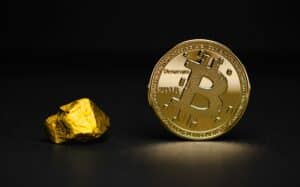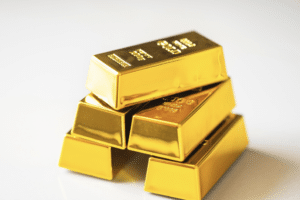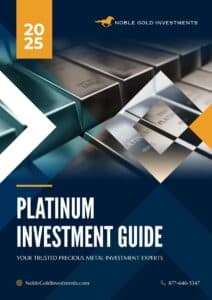In the intricate landscape of global finance, various geopolitical events can significantly influence precious metals markets. Political instability, such as conflicts or government upheavals, often drives investors towards safe-haven assets.
Gold, silver, platinum, and palladium frequently see increased demand during such times, as they offer a reliable store of value amidst uncertainty. Keep reading to learn more about some of the types of geopolitical events that could have an impact on precious metals markets.
Geopolitical Events and Precious Metals Market Dynamics
There are various geopolitical events that can have a significant impact on precious metals markets. These include wars, terrorist attacks, political instability, big currency movements, and tensions between nations. Wars and conflicts elevate uncertainty, leading investors to seek safe-haven assets like gold.
Terrorist attacks create immediate shockwaves that disrupt markets temporarily but can cause prolonged periods of uncertainty. Political instability in key global players, such as changes in government or failed policies, impacts investor confidence and market stability. International tensions—whether trade disputes, embargoes, or diplomatic conflicts—heighten global risk perception, often driving demand for precious metals.
Tariffs & Economic Sanctions
Disputes over tariffs and sanctions can disrupt supply chains and create economic uncertainty. Due to their perceived stability and inherent value, this often results in a spike in the prices of precious metals. Investors looking to safeguard their assets turn to these metals, which can cause substantial market movements.
Economic sanctions implemented by global powers can also impact the precious metals market. When countries face sanctions, it can lead to decreased production and export of valuable minerals.
This reduction in supply can cause volatility in the prices of gold, silver, platinum, and palladium. Through these dynamics, the geopolitical climate continues to shape the ever-fluctuating landscape of precious metals.
Why Gold and Silver Prices Are Impacted
When geopolitical tensions escalate, investors turn to these metals as reliable stores of value. Historical data shows significant price surges in gold and silver during periods of conflict and political turmoil. Such events create market distrust in traditional financial instruments, prompting a shift to precious metals. Silver, while also climbing, often sees more volatility due to its dual role as a commodity and financial asset. For acute geopolitical risks, gold and silver consistently prove their worth as resilient financial instruments.
Precious metals, particularly gold, are considered quintessential safe-haven assets. During geopolitical crises, market volatility spikes, and investor sentiment turns cautious. Gold retains its value when other sectors falter, offering a security blanket against economic instabilities.
Silver, while more volatile, also serves as a protective measure, though its price can fluctuate more than gold. The enduring value of these metals ensures that during geopolitical upheavals, they remain a favored choice for preserving wealth. Their intrinsic value and historical precedence fortify their reputation as reliable hedges in turbulent times.
Political Risk Factors and Investor Behavior
A region’s political stability can also impact demand for precious metals. When a country experiences political instability, such as coups, elections with uncertain outcomes, or civil unrest, investors often flock to safe havens like gold or silver to shield their wealth from potential losses in other asset classes.
Conversely, in politically stable environments, the demand for precious metals might decline as investor confidence in local markets increases. Stability reduces the urgency for risk-averse investing, leading to lower gold and silver purchases. Therefore, monitoring political stability is crucial when timing your gold and silver investments.
Economic Indicators and Market Conditions
Various economic indicators and market conditions can also have an impact on the price of precious metals. Two key elements are oil prices and stock market performance in relation to exchange rates.
Oil Prices and Precious Metals
Oil prices often correlate with precious metals markets. Rising oil prices can signal potential inflation, leading investors to seek safe-haven assets like gold and silver.
High oil prices also increase production costs, impacting economies and causing a shift in market sentiment. This shift can drive demand for precious metals, as they are perceived as more stable during economic uncertainty. Conversely, lower oil prices may reduce inflation concerns, potentially lessening demand for these metals.
Stock Market and Exchange Rates
A booming stock market usually diverts investments away from precious metals, lowering their demand and prices.
However, when the market takes a downturn, the demand for gold and silver as safe-haven investments typically increases.
Exchange rates, particularly the strength of the US dollar, can also have a direct impact. A strong dollar makes precious metals more expensive for foreign investors, reducing demand. In contrast, a weaker dollar lowers prices, making metals more attractive and boosting demand.
Hedging Strategies and Portfolio Management
Precious metals such as gold, silver, palladium, and platinum can be strategically incorporated into investment portfolios to protect wealth. Effective hedging strategies improve the resilience and stability of these portfolios.
Gold and silver, in particular, demonstrate strong hedging and safe haven properties during periods of geopolitical tension. Central banks also hold substantial reserves of these metals to protect their national economies.
Investors can purchase physical gold and silver to store at home or invest indirectly via financial instruments like ETFs or mining stocks. Many investors also choose to buy physical precious metals in a gold IRA retirement account for additional tax advantages.
Diversification Strategies
Precious metals typically show a negative correlation with traditional assets like stocks and bonds. Therefore, adding metals to investment portfolios ensures that gains in metals might offset losses in the stock market.
Gold and silver, noted for their consistent safe haven attributes, provide a reliable hedge. For example, during crises, their prices often rise due to increased demand, compensating for losses in other areas of a portfolio. Incorporating impact investing alongside traditional precious metals can also enhance hedging effectiveness, as seen in turbulent market conditions.
Maintaining a balanced distribution of assets, with a reasonable allocation to precious metals, can strengthen the overall risk management strategy. This approach ensures portfolios remain robust against unforeseen geopolitical disruptions.
Global Trade and Supply Chain Considerations
Global trade and supply chain disruptions can significantly affect the availability and prices of precious metals. These disruptions can arise due to trade negotiations, tariffs, sanctions, and strategic mining location shifts.
Trade Negotiations and Tariffs
Trade negotiations and tariffs play a crucial role in shaping global trade dynamics. When countries engage in trade wars or impose tariffs, it can lead to increased costs for importing precious metals. For instance, recent trade tensions between the United States and China have led to higher tariffs on metals, impacting their price and supply.
Additionally, trade agreements can either enhance or restrict the flow of precious metals. Agreements that reduce tariffs and barriers encourage smoother trade and a stable supply chain. Conversely, restrictive trade policies can result in shortages and price volatility, affecting industries reliant on precious metals.
Sanctions and Mining Locations Impact
Sanctions imposed on countries can have a direct impact on the mining and export of precious metals. For example, sanctions on major metal-exporting countries can halt mining operations or restrict exports, leading to supply shortages. This directly influences market prices and availability.
Moreover, the location of mining operations is critical. Political instability or geopolitical tensions in key mining regions can disrupt production and supply chains. Regions like South Africa and Russia, known for their precious metal reserves, face potential disruptions due to geopolitical events, which can affect global supply and trade patterns.
These factors underscore the importance of geopolitical stability in maintaining a stable supply chain for precious metals markets.
Analyzing Reports and Research for Informed Decisions
Investors can use specialized indices and analytical tools to better forecast the potential for geopolitical unrest. Two critical aspects include the Geopolitical Risk (GPR) Index and Wavelet Coherence Analysis, both of which can provide valuable insights.
The Significance of the GPR Index
The Geopolitical Risk (GPR) Index assesses how geopolitical events influence financial markets. Developed as an economic indicator, it tracks the frequency and prominence of geopolitical issues in leading news articles.
By quantifying geopolitical risks, investors can pinpoint potential periods of volatility in precious metals. Key components of the GPR Index include:
- Monitoring global political tensions
- Evaluating security-related incidents
- Analyzing the economic policies of major nations
With historical data accessible since 1985, the GPR Index helps to identify trends and predict movements. This data aids in making more informed decisions about gold, silver, and other precious metals.
Using Wavelet Coherence Analysis
Wavelet Coherence Analysis provides a detailed examination of the relationships between geopolitical events and market responses. This method allows for the detection of both short-term and long-term patterns in data, which is particularly useful in highly volatile environments.
By comparing the coherence between two different time-series datasets, such as geopolitical event frequency and precious metal prices, this analysis uncovers synchronous behaviors.
Wavelet Coherence Analysis is essential for:
- Understanding periodicities in market data
- Identifying phases of high correlation
- Detecting changes in market dynamics
Researchers use this analysis to create more robust trading strategies by determining when geopolitical stress significantly impacts market prices. This ensures decisions are not based on mere speculation but on rigorous, evidence-based analysis.
Buying Gold & Silver In A Precious Metals IRA
If you’re looking for a way to hedge against the negative economic impact of geopolitical unrest, investing in precious metals is one of the most popular options available.
Whether you’re interested in buying physical precious metals to store at home or you’d prefer to buy them in a tax-deferred precious metals IRA, Noble Gold Investments can help you diversify your assets and secure your wealth.
Call us now at (877) 646-5347 to speak to one of our gold IRA specialists, or click here to open an account today.







